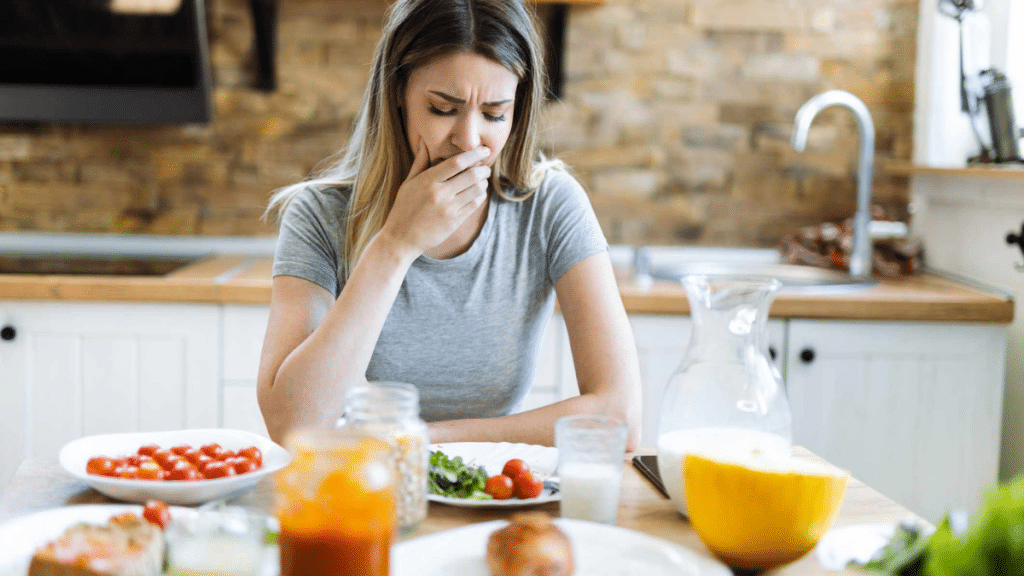You’re doing everything right. You’re eating clean, filling your cart with kale, legumes, and “superfoods,” skipping the junk, and loading your meals with garlic, onions, and wholesome ingredients. You’re doing what the health gurus say. But… you feel bloated. Sluggish. Gassy. Uncomfortable. Maybe even a little foggy.
If this sounds familiar, you’re not alone—and no, you’re not crazy.
As it turns out, some of the most praised “healthy” foods on your plate might actually be triggering your symptoms—especially if you have a sensitive gut or something called fructan intolerance.
When Superfoods Aren’t So Super
Let’s start with understanding a fructan intolerance—fructans are a type of fermentable carbohydrate that belongs to the FODMAP family (which stands for fermentable oligosaccharides, disaccharides, monosaccharides, and polyols). For people with IBS, SIBO, or sensitive digestive systems, these compounds can cause all kinds of discomfort: bloating, gas, cramps, and irregular bowel movements, to name a few.
Fructans are found in many otherwise healthy, fiber-rich foods. Think:
- Garlic
- Onions
- Wheat
- Leeks
- Artichokes
- Asparagus
The trouble is, humans don’t have the enzymes to break down fructans in the small intestine. In most people, they pass into the large intestine where they ferment—feeding gut bacteria and producing gas. That’s fine for people with a balanced gut, but if you’re fructan-intolerant, this process causes inflammation and chaos. And yes, this can happen even if you eat perfectly “healthy.”
The Healthy Foods That Might Be Hurting You
Let’s take a look at a few nutrition-world darlings that could be quietly sabotaging your gut health.
1. Garlic and Onions
These two are touted for their anti-inflammatory and immune-boosting properties—and rightfully so. They’re full of sulfur compounds, antioxidants, and prebiotic fibers. But they’re also packed with fructans. Even small amounts can trigger intense symptoms in sensitive individuals.
If you’re feeling bloated after what seemed like a light veggie stir-fry or a “clean” salad dressing, garlic and onions could be the hidden culprits.
What to try instead:
Use garlic-infused olive oil to get the flavor without the fructans (they’re not soluble in oil), and switch to green onion tops or chives for a gentler allium kick.
2. Legumes and Lentils
Beans are often labeled a plant-based superfood—and yes, they’re full of protein and fiber. But they’re also high in galacto-oligosaccharides (GOS), another type of FODMAP, and often cause bloating and discomfort even in people without diagnosed IBS.
What to try instead:
Go for canned lentils or chickpeas, which are lower in FODMAPs thanks to the draining and rinsing process. Start with small portions and see how your body responds.
3. Wheat Bran and Whole Grains
Whole wheat and bran cereals are marketed as fiber-rich powerhouses for gut health. But if you have fructan sensitivity, wheat-based products—even the “good” ones—can trigger bloating and gas.
What to try instead:
Choose oat bran, quinoa, or certified low-FODMAP sourdough bread made with spelt flour or slow fermentation. These offer fiber without the same fermentation chaos.
4. Asparagus and Artichokes
These are classic “clean eating” vegetables, loaded with prebiotics that feed your microbiome. But again, they’re high in fructans—and even small servings can set off symptoms.
What to try instead:
Opt for zucchini, carrots, or bok choy—all nutrient-rich, low-FODMAP alternatives that are easier on sensitive bellies.
How to Get the Nutrients Without the Bloat
Let’s be clear: this isn’t about demonizing healthy food. If your body tolerates garlic and onions just fine—great! But for those with sensitive guts, the key is to support your digestive system so you can feel good and nourish your body.
Here’s how:
1. Try Digestive Enzymes
If you don’t want to give up certain high-FODMAP foods completely, consider adding a digestive enzyme supplement to your routine—especially those tailored for breaking down FODMAPs. Some enzymes target fructans specifically, making garlic and onion more tolerable in small amounts.
Enzymes won’t cure food sensitivity, but they can minimize symptoms, especially when you’re dining out or indulging in a favorite dish.
2. Focus on Low-FODMAP Substitutes
Cooking with a sensitive gut doesn’t have to be boring. You can still enjoy flavorful meals by swapping in lower-FODMAP alternatives and using tools like:
- Garlic-infused oils
- Lemon juice, ginger, and herbs for seasoning
- Fermented foods (in moderation) to support your gut microbiome
It’s not about cutting everything out—it’s about finding your personal threshold and working within it.
3. Reintroduce Foods Strategically
If you’re just starting a low-FODMAP journey, you don’t have to avoid these foods forever. The goal is to eliminate triggers temporarily, then reintroduce them one by one to learn what you can tolerate.
Sometimes, it’s about portion size. Half a clove of garlic in a dish might be fine—while two cloves send your gut into meltdown.
4. Support Your Gut Daily
Beyond food, a healthy gut thrives on routine. Try:
- Eating slowly and chewing thoroughly
- Managing stress (yes, it directly affects your gut)
- Prioritizing sleep and movement
- Incorporating probiotics to balance your microbiome
When your gut feels more resilient, even those tough-to-digest foods can become more manageable.
Final Thoughts: You’re Not Crazy, and You’re Not Alone
If you’ve ever thought, “How can I feel this bad when I eat so clean?”, know this: you’re not doing anything wrong. Your body just has different needs—and honoring them isn’t a weakness, it’s wisdom.
Reframing your relationship with food and understanding how “healthy” doesn’t always mean “healthy for you” can be empowering. You’re allowed to be selective. You’re allowed to modify recipes. You’re allowed to feel good after you eat.
So yes, eat your greens. Enjoy your meals. But most importantly, listen to your gut—it usually knows what it’s talking about.

